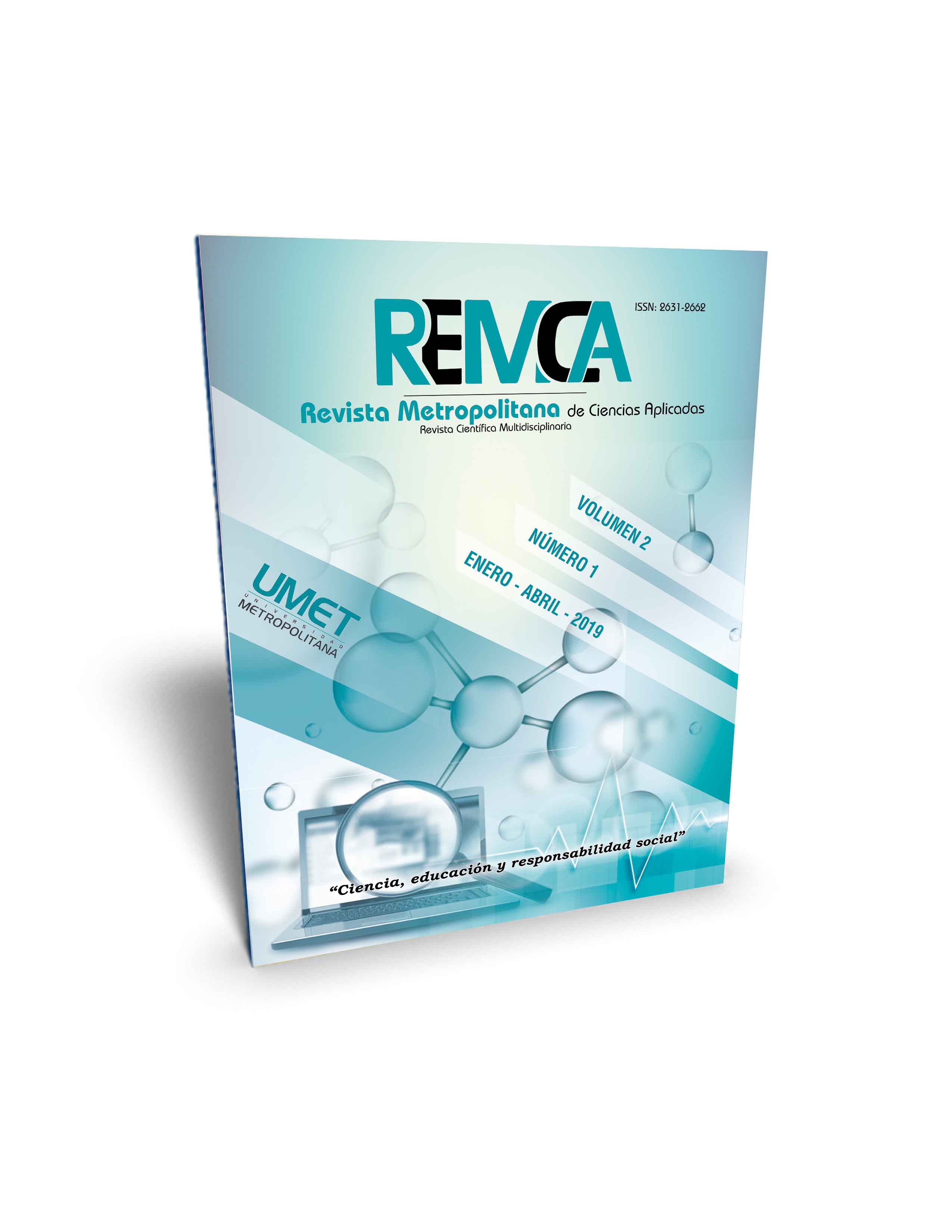Quantification of the economic value of CO2 in a plantation of Theobroma cacao l
DOI:
https://doi.org/10.62452/b6h2mt10Keywords:
Biomass, litter, cocoa CCN51, economic developmentAbstract
The ecosystem service values generated by agricultural production models can be used to improve the economic income of the farmer. As is the case of carbon storage or payments for the non-emission of CO2. In this context the objectives were set: to estimate in a plot of cocoa type CCN51 the storage levels of CO2 in litter and standing trees and to project the economic contribution for sequestering CO2. For this, three plots were selected where a 15 m transept was delimited, in each 5 m leaf litter samples were taken and the diameter of the cacao trees was measured, to estimate the volume. The process of quantifying the biomass was by means of alometric equations. The results indicated a greater accumulation of CO2 in the litter (436.96 kg ha-1), showing statistical significance (P <0.05) with respect to the value obtained in the trees (69.00 kg ha-1).
Downloads
References
Barrezueta-Unda, S., Luna-Romero, A., & Barrera-León, J. (2018). Almacenamiento de carbono en varios suelos cultivados con cacao en la provincia El Oro-Ecuador. Revista Científica Agroecosistemas, 6(1), 154–161. Recuperado de https://aes.ucf.edu.cu/index.php/aes/article/view/177/212
Cerda, R., et al. (2014). Contribution of cocoa agroforestry systems to family income and domestic consumption: looking toward intensification. Agroforestry Systems, 88(6), 957–981. Recuperado de http://publications.cirad.fr/une_notice.php?dk=574493
Concha, J. Y., Alegre, J. C., & Pocomucha, V. (2007). Determinación de las reservas de carbono en la biomasa aérea de sistemas agroforestales de Theobroma cacao l. en el departamento de San Martín, Perú. Ecología Aplicada, 6, 75–82. Recuperado de http://www.scielo.org.pe/pdf/ecol/v6n1-2/a09v6n1-2.pdf
Dawoe, E. K., Quashie-Sam, J. S., & Oppong, S. K. (2014). Effect of land-use conversion from forest to cocoa agroforest on soil characteristics and quality of a Ferric Lixisol in lowland humid Ghana. Agroforestry Systems, 88(1), 87–99. Recuperado de https://www.mendeley.com/catalogue/effect-landuse-conversion-forest-cocoa-agroforest-soil-characteristics-quality-ferric-lixisol-lowlan/
Díaz, P., Ruiz, G., Tello, C., & Arévalo, L. (2016). Carbono almacenado en cinco sistemas de uso de tierra , en la región San Martín Perú. Revista Intenacional de Desarrollo Regional Sustentable, 1(2), 57–67. Recuperado de http://rinderesu.com/index.php/rinderesu/article/download/22/06
Domínguez-Junco, O., Rojas-Hernández, D., Gómez-Hernández, J., & Medina-Peña, R. (2017). Metodología para gestión contable de los servicios ecosistémicos forestales con enfoque de cadena de valor. Revista Cientifica Agroecosistemas, 51(1), 71–78. Recuperado de https://aes.ucf.edu.cu/index.php/aes/article/view/100/136
Farquhar, G. D., Ehleringer, J. R., & Hubick, K. T. (1989). Carbon Isotope Discrimination and Photosynthesis. Annual Review of Plant Physiology and Plant Molecular Biology, 40(1), 503–537. Recuperado de https://www.annualreviews.org/doi/abs/10.1146/annurev.pp.40.060189.002443
International Cocoa Organization. (2018). ICCO Quarterly Bulletin of Cocoa Statistics (Vol. XLIV). Geneva: ICCO.
Mithöfer, D., et al. (2017). Unpacking ‘sustainable’ cocoa: do sustainability standards, development projects and policies address producer concerns in Indonesia, Cameroon and Peru? International Journal of Biodiversity Science, Ecosystem Services & Management, 13(1), 444–469. Recuperado de https://www.cifor.org/library/6928/
Pocomucha, V., Alegre, J., & Abregú, L. (2016). Análisis socio económico y carbono almacenado en sistemas agroforestales de cacao (Theobroma cacao L.). Huánuco. Ecología Aplicada, 15(2), 108–114. Recuperado de http://revistas.lamolina.edu.pe/index.php/eau/article/view/750
Somarriba, E., et al. (2013). Carbon stocks and cocoa yields in agroforestry systems of Central America. Agriculture, Ecosystems & Environment, 173, 46–57. Recuperado de http://www.worldcocoafoundation.org/wp-content/uploads/files_mf/somarriba2013environmentsustainabilityagroforestrycarbon.pdf
Spokas, K. A., et al. (2012). Biochar: A Synthesis of Its Agronomic Impact beyond Carbon Sequestration. Journal of Environment Quality, 41(4), 973. Recuperado de https://www.ncbi.nlm.nih.gov/pubmed/22751040
Ward, A., et al. (2016). Using carbon finance to support climate policy objectives in high mountain ecosystems Using carbon finance to support climate policy objectives in high mountain ecosystems. Climate Policy, 16(6), 732–751. Recuperado de https://www.tandfonline.com/doi/abs/10.1080/14693062.2015.1046413
Downloads
Published
Issue
Section
License
Copyright (c) 2019 Pamela Ríos-Carrión, Salomón Barrezueta-Unda, Cesar Quezada-Abad, Wilmer Moreira-Blaci (Autor/a)

This work is licensed under a Creative Commons Attribution-NonCommercial-ShareAlike 4.0 International License.
Authors who publish in Revista Metropolitana de Ciencias Aplicadas (REMCA), agree to the following terms:
1. Copyright
Authors retain unrestricted copyright to their work. Authors grant the journal the right of first publication. To this end, they assign the journal non-exclusive exploitation rights (reproduction, distribution, public communication, and transformation). Authors may enter into additional agreements for the non-exclusive distribution of the version of the work published in the journal, provided that acknowledgment of its initial publication in this journal is given.
© The authors.
2. License
The articles are published in the journal under the Creative Commons Attribution-NonCommercial-ShareAlike 4.0 International License (CC BY-NC-SA 4.0). The terms can be found at: https://creativecommons.org/licenses/by-nc-sa/4.0/deed.en
This license allows:
- Sharing: Copying and redistributing the material in any medium or format.
- Adapting: Remixing, transforming, and building upon the material.
Under the following terms:
- Attribution: You must give appropriate credit, provide a link to the license, and indicate if any changes were made. You may do this in any reasonable manner, but not in any way that suggests the licensor endorses or sponsors your use.
- NonCommercial: You may not use the material for commercial purposes.
- ShareAlike: If you remix, transform, or build upon the material, you must distribute your creation under the same license as the original work.
There are no additional restrictions. You may not apply legal terms or technological measures that legally restrict others from doing anything the license permits.




